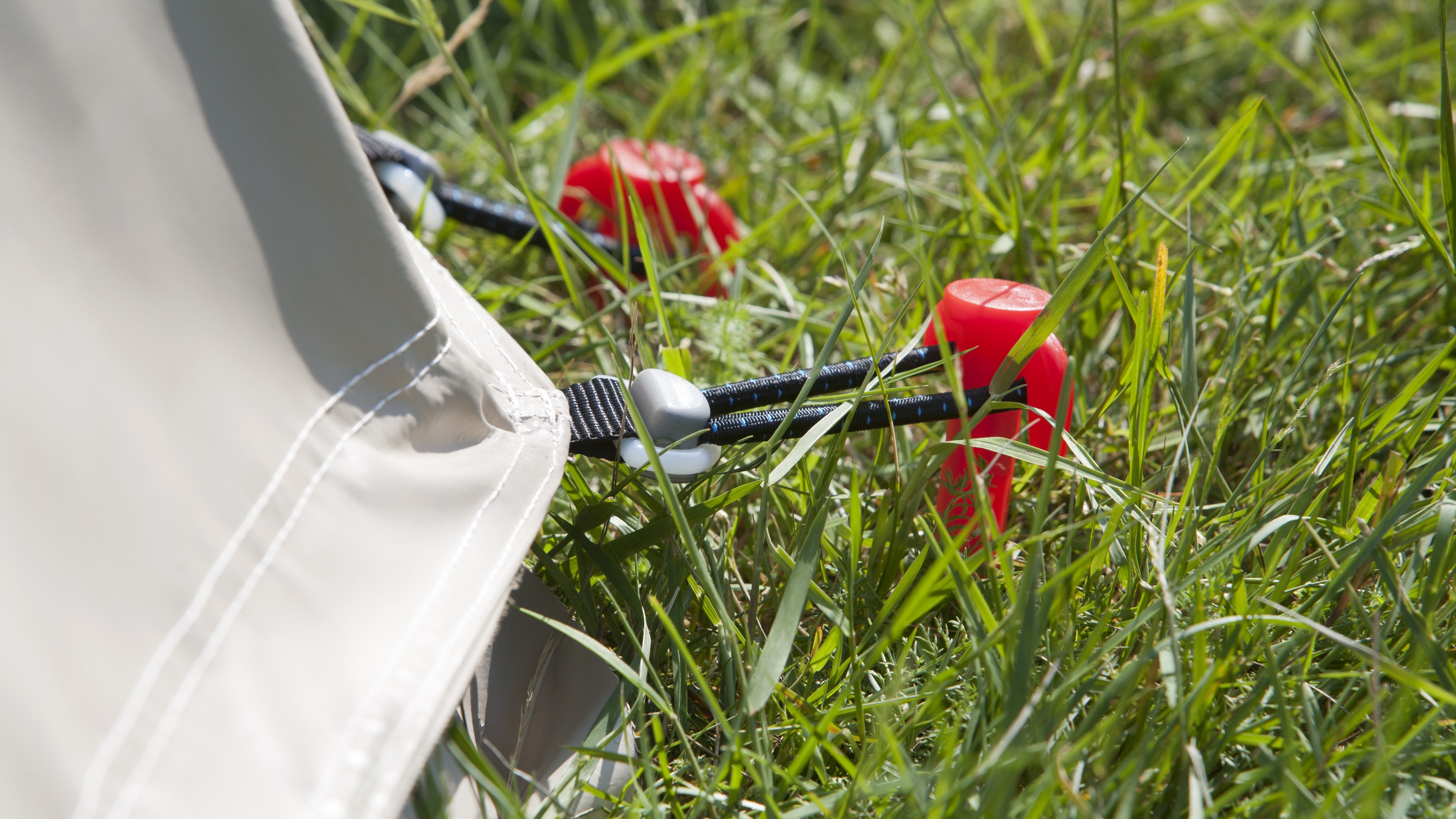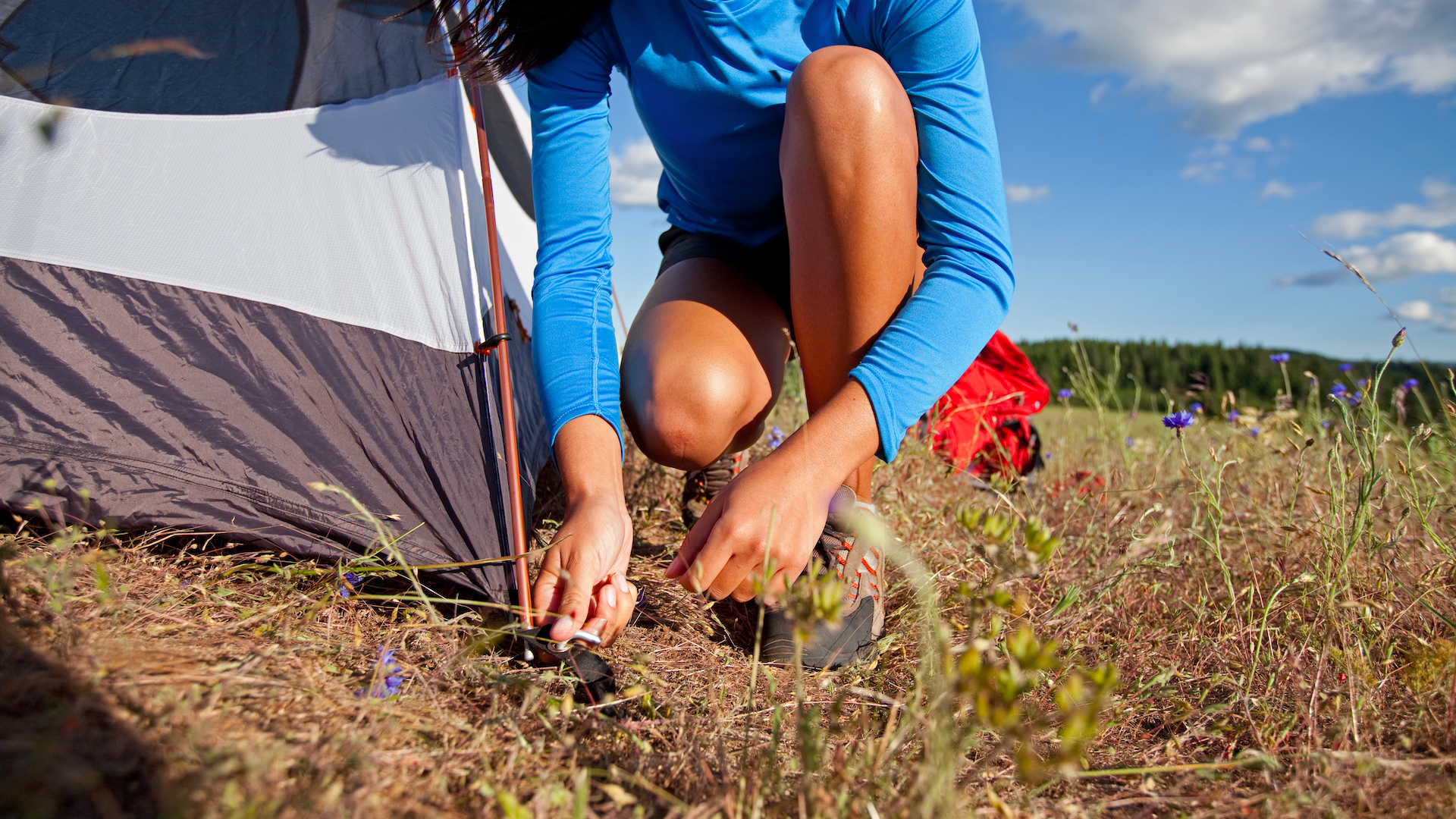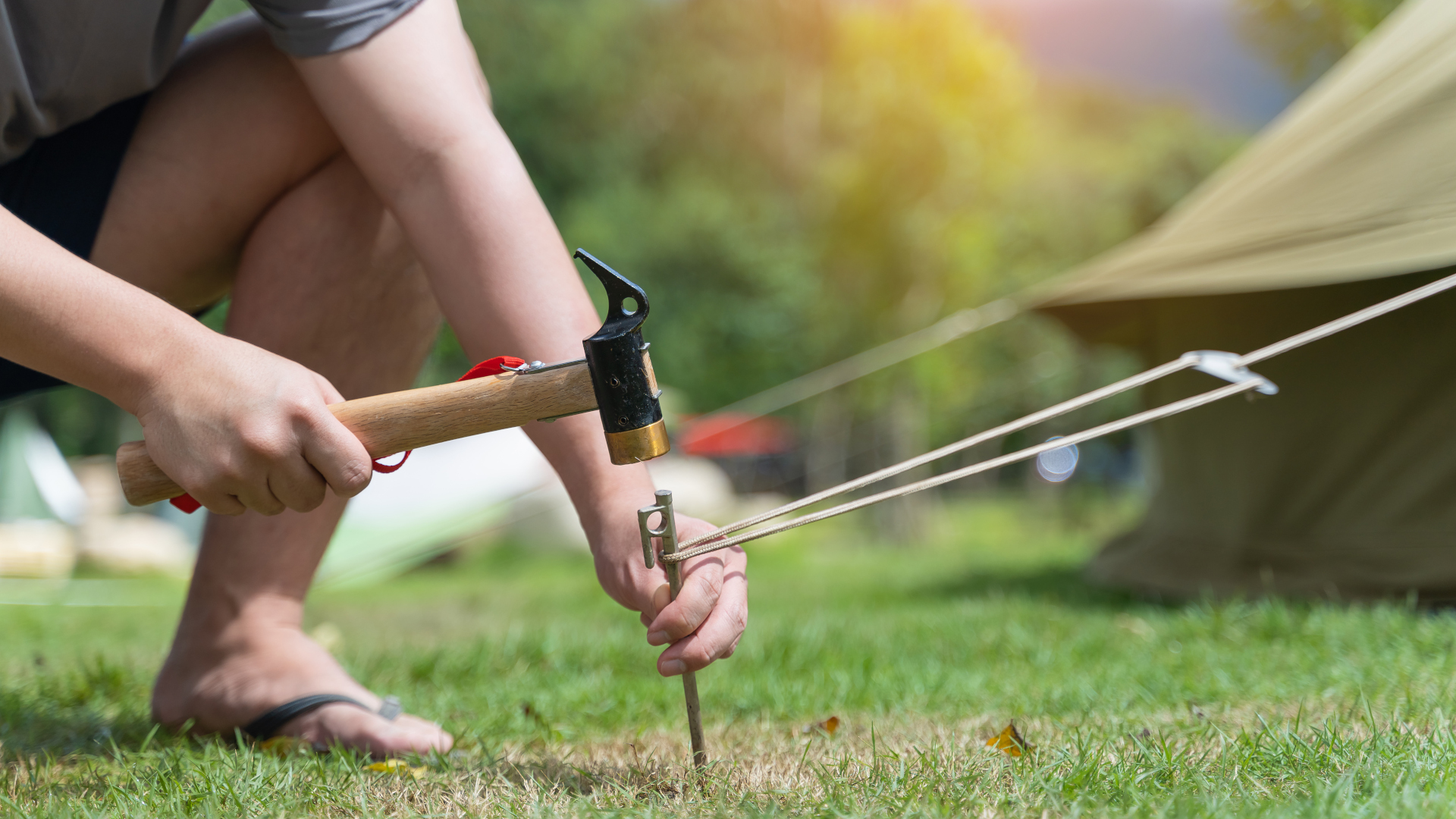Are plastic tent pegs any good?
We answer all the questions about plastic tent pegs you probably never knew you had

There’s probably a world out there somewhere where you can have too many sets of tent pegs, but on this planet, the problem is usually not having enough tent pegs, or having the wrong type of pegs.
Not long ago, tent pegs were things that simply came with whatever camping tent you happened to be buying, and something you probably wouldn’t have thought twice about. After a couple of camping trips, however, you usually find you’re a peg or two short and half the ones you have left are bent, which starts to make for a rather unsound pitch.
So you start shopping for an extra set of tent pegs, only to discover that nowadays, there are a vast array of possibilities, from V pegs to pile drivers. Not only are today's tent stakes made using a variety of metals, like aluminum, steel and titanium, all of which you need to understand in terms of their strengths and weaknesses, there are even plastic tent pegs out there.
But can plastic tent pegs possibly be any good? If your tent comes with plastic pegs, should you immediately replace them with sturdy metal pegs? In this article, we answer all the questions about plastic tent pegs you probably never knew you had.

What are plastic tent pegs for?
Plastic tent pegs abound in the camping world these days, and though they look a bit like toy pegs, plastic pegs such as these ones on Amazon are best for securing tarps and smaller tents (think one-person up to three-person tents, but not family tents and yurts) on softer ground, such as grass-covered earth or even sandy terrain where you’re not expecting lots of rocks. They’re also great for staking out your guy lines.
A big benefit of plastic tent pegs is that they’re super lightweight, so if you’re backpacking and carrying all your gear, they can be a great choice to keep your pack weight down.
What are plastic tent stakes made of?
Plastic tent pegs are usually made using polypropylene or polycarbonate, which as we already mentioned means they’re light, but they’re also surprisingly durable and sturdy. They can certainly break if you try to hammer them into hard ground with a mallet, but they won’t break if used properly, nor will they bend like steel pegs which is very useful indeed. Furthermore, they won’t rust so they’re easy to maintain during those long winters where all your camping gear is packed away.
Advnture Newsletter
All the latest inspiration, tips and guides to help you plan your next Advnture!

What are the best type of tent pegs?
There are heaps of different types of tent pegs these days and it can definitely all get a bit mind-boggling. The short answer to the question of which is best is that it all depends on what you’re going to do with them. Here are a few examples of common tent peg types and what you might do with them:
- Wire tent pegs are decent all-rounders for a variety of types of terrain, though they're not the strongest for camping in the wind.
- V tent pegs are also great for different types of ground, and are best used on the corners of your tent and main guy line points.
- Rock tent pegs, as the name suggests, are ideal for hard ground and will withstand being hammered in with your camping mallet.
- Pile drivers are super strong and should be used for camping on rocky ground.
- Plastic tent pegs are best for softer ground, and securing guy lines and tarps.

Are plastic or metal tent pegs better?
As you can see, which is best all depends on your purposes, but because plastic pegs are so light and won’t bend, plus they can be quite budget-friendly, we do recommend having a set of plastic pegs in addition to your metal pegs. That way you’ll have a whole extra set for backup that won’t add much weight to your pack. To add value, be sure to get them in bright colors to help make your guy lines visible at night and avoid trips and tumbles near the campfire.
Julia Clarke is a staff writer for Advnture.com and the author of the book Restorative Yoga for Beginners. She loves to explore mountains on foot, bike, skis and belay and then recover on the the yoga mat. Julia graduated with a degree in journalism in 2004 and spent eight years working as a radio presenter in Kansas City, Vermont, Boston and New York City before discovering the joys of the Rocky Mountains. She then detoured west to Colorado and enjoyed 11 years teaching yoga in Vail before returning to her hometown of Glasgow, Scotland in 2020 to focus on family and writing.

